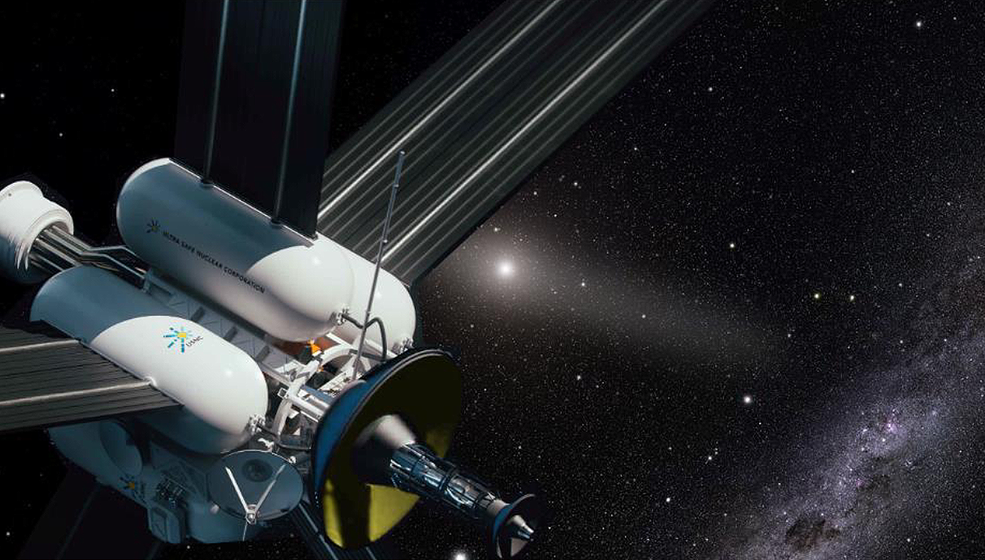The Nyx Mission to Observe the Universe from Deep Space - Enabled by EmberCore, a High Specific Power RadioisotopeElectric Propulsion System
Christopher Morrison
Ultra Safe Nuclear Corporation – Space
USNC-Tech is proposing a radioisotope-electric-propulsion spacecraft design powered by a novel commercial radioisotope technology called EmberCore. The spacecraft architecture is capable of incredible ∆V on the order of 50-100 km/s. This spacecraft would enable the unprecedented capability to complete science objectives in the outer solar system.
This Phase II NIAC builds upon the feasibility of the Phase I by looking at logistical changes such as supply chain, regulatory launch approval, assembly, integration, and test while also executing on the Phase I maturation plan by completing production of a radioisotope at a small lab scale and preparing for a full-scale demonstration of the radioisotope in a future phase.
The Phase II also features integrated mission design whereby a team of scientist co-PI’s will be able to trade the spacecraft architecture and radioisotope directly against previously impossible missions such as going beyond the Zodiacal glow of the solar system, parallax microlensing, detection of Kuiper belt objects including likely extrasolar objects, flyby and intercepts of objects of interest and much more.
This Phase II builds upon the innovation of the Phase I and includes analysis of a multi-stage hybrid-radioisotope system which can quickly boost the system with a shorter life radioisotope and an endurance stage for long term operation and additional outer solar system maneuvering.
This Phase II focuses significantly on evaluating a wide range of spacecraft design, power conversion, and radioisotope configurations to find the most attractive but achievable missions (enabling the great amount of science) that can be focused upon in a future NIAC Phase III or similar program.
































